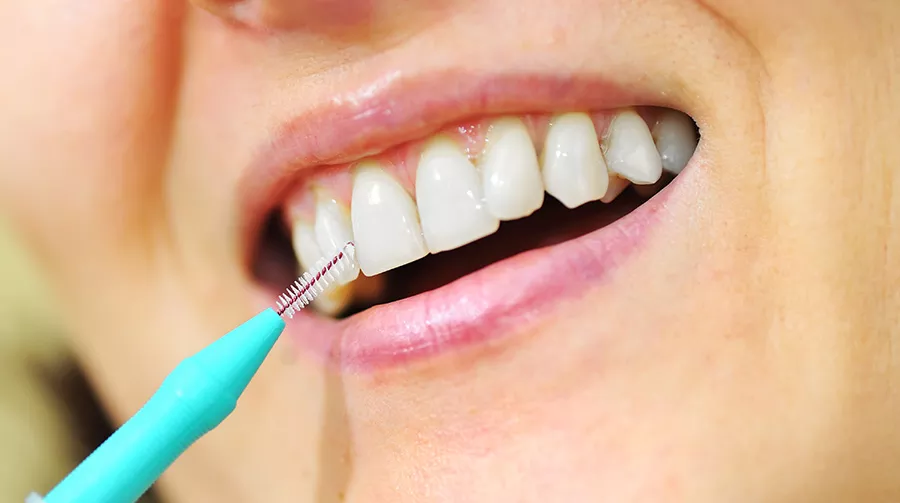Brushing dental implants is crucial for maintaining oral hygiene and the longevity of your implants. Proper brushing techniques can prevent plaque buildup, gum disease, and implant complications. In this comprehensive guide, we will delve into the step-by-step process of brushing dental implants effectively. Here are the key points we’ll cover:
Choosing the Right Toothbrush: The first step in brushing dental implants is selecting the appropriate toothbrush.
Discuss with your dentist whether a manual or electric toothbrush is better suited for your specific implant type and oral health needs.
Soft Bristles for Gentle Cleaning: Opt for a toothbrush with soft bristles to avoid damaging the implant surface or causing irritation to the surrounding gums. Soft bristles can effectively clean without causing abrasion.
Recommended Toothpaste for Dental Implants: Use a toothpaste that is specially formulated for dental implants or one that is gentle and non-abrasive. Avoid toothpaste with harsh ingredients that may scratch the implant surface.
SEE ALSO: How Dental Implants Are Made?
Step-by-Step Brushing Technique:
Rinsing: Start by rinsing your mouth with water to remove any loose debris.
Positioning: Hold your toothbrush at a 45-degree angle towards the gum line and implant surface.
Gentle Circular Motion: Use gentle circular motions to clean the implant, focusing on the areas where the implant meets the gum.
Inner and Outer Surfaces: Brush the inner and outer surfaces of the implant-supported crown or prosthesis.
Interdental Cleaning: Utilize interdental brushes or floss designed for implants to clean between the implants and adjacent teeth.
Tongue and Roof of Mouth: Don’t forget to brush your tongue and the roof of your mouth to remove bacteria and maintain overall oral hygiene.
Rinse Thoroughly: Finish by rinsing your mouth thoroughly with water or an antimicrobial mouthwash.
Frequency of Brushing: Aim to brush your dental implants at least twice a day, preferably after meals. Consistent brushing helps prevent plaque buildup and bacterial growth.
Additional Tips for Implant Maintenance:
Regular Dental Check-ups: Schedule regular visits to your dentist for professional cleanings and examinations of your dental implants.
Avoid Abrasive Products: Steer clear of abrasive dental products, such as harsh toothpaste or abrasive cleaning tools, which can damage the implant surface.
Healthy Diet: Maintain a balanced diet rich in nutrients to support oral health and overall well-being.
Quit Smoking: If you smoke, consider quitting as smoking can increase the risk of implant complications and gum disease.
Signs of Improper Brushing:
Bleeding Gums: If your gums bleed during brushing, it may indicate improper technique or underlying gum inflammation.
Persistent Bad Breath: Poor oral hygiene can lead to bad breath, indicating the need for better brushing habits.
Loose Implant: Contact your dentist immediately if you notice any loosening of the implant or discomfort while brushing.
Conclution
By following these guidelines and maintaining diligent oral hygiene practices, you can effectively brush your dental implants and promote long-term oral health. Remember to consult your dentist for personalized advice and recommendations based on your individual implant care needs.
FAQs
Can you brush implants with toothpaste?
Yes, you can brush dental implants with toothpaste, just like you would with natural teeth. However, there are a few considerations and best practices to keep in mind:
Use a Soft-Bristled Toothbrush: Opt for a soft-bristled toothbrush to avoid damaging the implant or causing irritation to the surrounding gums.
Non-Abrasive Toothpaste: Choose a non-abrasive toothpaste recommended by your dentist. Abrasive toothpaste can scratch the implant surface, leading to plaque buildup and potential complications.
Avoid Whitening Toothpaste: While whitening toothpaste is generally safe, it’s best to consult your dentist before using it on dental implants. Some whitening agents may not be suitable for implants.
Brushing Technique: Gently brush the implant and surrounding gum area using small circular motions. Pay attention to all surfaces of the implant, including the crown and abutment.
Interdental Cleaning: In addition to brushing, use interdental brushes or floss specifically designed for implants to clean between the implant and adjacent teeth.
How long after dental implant can I brush?
Regarding when to start brushing after dental implant placement, it’s essential to follow your dentist’s recommendations.
Typically, you can start gentle brushing the day after the implant surgery, focusing on the areas away from the surgical site.
As healing progresses and your dentist advises, you can gradually include the implant area in your brushing routine.
How long after dental implant can I brush?
Regular dental check-ups and professional cleanings are also crucial for maintaining the health and longevity of dental implants. Your dentist may recommend specific cleaning techniques or products based on your individual needs.

